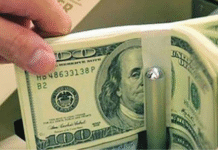
That the novel coronavirus has brought down many businesses is nothing new. Tourism firms and hotels are some of the first victims to come to mind, considering all the non-stop ruckus with isolation.
But similar to the proverbial saying of necessity being the mother of innovation, this quagmire is forcing some to shift focus and find ways to keep operations running.
The home textiles industry has done exactly that.
This story is about how people’s need to stay for more extended periods at homes, and even at hospitals, is resulting in a booming trade for the seemingly inconspicuous fabric.
And data from the Export Promotion Bureau says it all.
And the list does not solely comprise everyday items required at homes such as bed sheets, curtains, kitchen linen, napkins and covers for quilts, blankets, comforters and cushions.
Demand has skyrocketed for hospital bed sheets and gowns in tune with the rise in the number of Covid-19 patients worldwide.
The export figure is also 18.24 per cent higher than the quarterly target of $299.61 million set by the government earlier.
The annual target for the current fiscal year has been fixed at $960 million after the country earned $758.91 million the previous fiscal year.
“The shipments from Bangladesh increased mainly because its use has increased,” said Rashed Mosharraf, general manager for marketing and head of operations of Zaber & Zubair Fabrics.
Because of the pandemic, people are staying indoors for longer periods, and this has increased the use of home textiles a lot, said the official of the country’s largest home textile exporter with annual figures reaching some $200 million.
Although sales of garment items declined in retail stores in the European and American markets, that of home textiles increased, he said.
Apart from the American, European and Canadian markets, the export of home textile has been booming recently in Asian and Australian markets, exporters said.
This, in turn, is countering the decrease in sales of fabrics and sheets used in hotels and airplanes during the pandemic because of the decline of businesses in the aviation, tourism and hospitality sectors.
This trend of an increasing inflow of work orders from international retailers and brands is being propelled by higher demand, especially from hospitals, said Mosharrof.
So much so that Mosharrof says his company would be fully occupied with work orders for hospital bedsheets from international retailers and brands up to January next year.
He said his company has been receiving a lot of work orders from emerging markets like Australia, while a significant number of work orders are for items required in retirement homes.
Industry insiders say Bangladesh has become a major source for home textile because of massive investments made by local entrepreneurs.
As a result, local manufacturers can also supply a vast quantity of requirements of buyers.
More than Tk 25,000 crore has been invested in the homes textile sector over the last couple of decades in Bangladesh, said Monsoor Ahmed, secretary of the Bangladesh Textile Mills Association (BTMA).
The major exporters from Bangladesh are a bunch of more than 40 big mills, he said.
The BTMA secretary also said local exporters would end up shipping more than $1 billion worth of home textile from the country in a year.
The dyeing and other businesses associated with the home textiles sector are employing thousands of workers across the country, said Ahmed.
It is not just the massive investments that are drawing buyers.
Bangladesh had a comparatively shorter lockdown period for the pandemic compared to that imposed in countries such as India and Pakistan.
Moreover, most of the factories were in operation during the lockdown, giving much-needed relief to buyers searching for sources open for business.
Another factor has been a shift of a portion of work orders from China because of its trade war with the US. Many of these came from the buyers in the US, looking for alternatives to China.
China has been losing work orders for garments and home textiles because of a higher cost of production and shortage of skilled workforce in context to that in Bangladesh.
Shahadat Hossain Sohel, president of the Bangladesh Terry Towel & Linen Manufacturers and Exporters Association, also cited that the export of healthcare textile items had boomed over the last few months because of the higher use in hospitals for the pandemic.
For instance, the export of medical gowns and patient gowns and towels for hospitals increased a lot from Bangladesh for the spread of the virus, he said.
Moreover, home textile work orders shifted to Bangladesh not only from China but also from Pakistan at the beginning of this year.
Sohel himself received a good quantity of work orders from a buyer who had long been dependent on a source in Pakistan.
This buyer shifted work orders from Pakistan, citing two reasons. Bangladesh is offering a better-qualityproduct, and there is a management problem in the Pakistani company, he said.
The boom in online shopping is another important reason for the higher export of home textiles from Bangladesh, he said.









